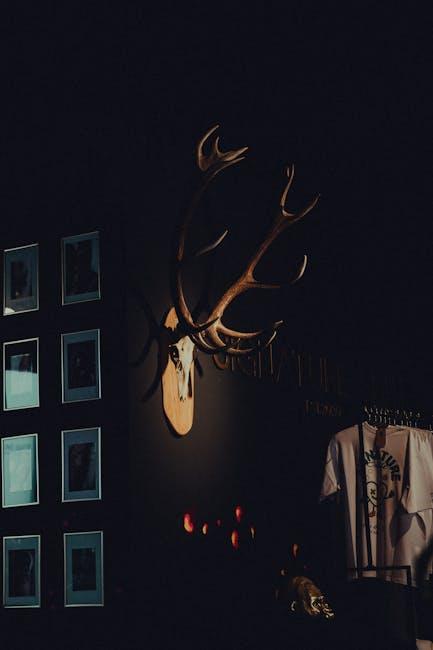Lighting is an often underestimated yet pivotal element in the creation of dramatic scenes, wielding the power to transform narratives and evoke profound emotional responses. By carefully selecting lighting techniques, directors and cinematographers can manipulate mood, highlight pivotal moments, and guide audience perceptions. This article delves into the nuanced interplay between lighting choices and atmospheric impact, exploring how shadows, color temperatures, and light intensity can dramatically alter the storytelling landscape. Through an analytical lens, we will unravel the artistry behind lighting decisions, illustrating their crucial role in crafting unforgettable dramatic experiences.
Understanding the Emotional Impact of Light and Shadow
In the realm of dramatic storytelling, the interplay of light and shadow serves as a powerful tool to evoke emotion and enhance narrative depth. Lighting choices can subtly influence how an audience perceives a scene, affecting mood and character perception. A well-lit environment might convey a sense of openness and honesty, while shadows can introduce mystery, tension, or even fear. This dynamic interaction can transform a mundane scene into something profoundly impactful.
- Contrast: High contrast between light and dark can highlight conflict or duality within a scene, drawing the viewer’s attention to the struggle between opposing forces.
- Color Temperature: Warm lighting often evokes feelings of comfort and intimacy, whereas cooler tones might create a sense of detachment or unease.
- Direction: The angle of light can define a character’s role in the story. For example, lighting from below might create a sinister effect, while overhead lighting can suggest authority or power.
Understanding these elements allows filmmakers and photographers to craft scenes that resonate on an emotional level, guiding the audience’s emotional journey through visual cues.

Color Temperature: Setting the Mood for Drama
In the realm of dramatic scenes, color temperature plays a pivotal role in shaping the emotional landscape. Warm tones, often characterized by reds, oranges, and yellows, can infuse a scene with a sense of intimacy or impending tension. These hues might be employed to suggest the warmth of a close-knit gathering or the fiery intensity of a heated confrontation. Conversely, cool tones such as blues and greens tend to evoke feelings of detachment, mystery, or melancholy. They can be used to underscore the isolation of a character or the cold, calculated nature of a suspenseful plot.
- Warm Lighting: Creates an inviting or tense atmosphere.
- Cool Lighting: Suggests detachment or mystery.
- Neutral Lighting: Offers a balanced, realistic feel.
By thoughtfully manipulating these elements, filmmakers and photographers can craft scenes that resonate deeply with audiences, guiding their emotional responses and heightening the drama. The careful selection of color temperature is not just a technical decision; it’s an artistic choice that defines the mood and tone of the narrative.

Intensity and Focus: Guiding the Audience’s Attention
In the realm of dramatic storytelling, lighting is an invaluable tool for directing the audience’s gaze and highlighting key elements of a scene. By strategically manipulating intensity and focus, filmmakers and theater directors can craft a visual narrative that underscores the emotional and thematic core of the performance. Consider the use of spotlights: a solitary beam can isolate a character, drawing viewers into their internal world and emphasizing their significance within the scene. Similarly, backlighting can create silhouettes that add mystery and tension, inviting the audience to infer hidden motivations or impending revelations.
- High-Intensity Lighting: Often used in climactic moments to amplify drama and urgency, capturing every detail and expression.
- Low-Intensity Lighting: Creates intimacy and subtlety, encouraging viewers to lean in and engage more deeply with the narrative.
By varying these elements, creators can maintain a dynamic visual flow, ensuring that the audience’s attention is not just held, but actively guided through the unfolding drama. This deliberate focus not only enhances the storytelling but also enriches the audience’s emotional journey.

Practical Tips for Crafting Atmospheric Lighting
Creating the right lighting for dramatic scenes requires a keen understanding of how light interacts with the environment and characters. Here are some essential tips to enhance the atmosphere effectively:
- Layered Lighting: Use a combination of ambient, task, and accent lighting to add depth and texture. This approach helps in creating a dynamic visual hierarchy, drawing attention to specific areas while maintaining an overall mood.
- Color Temperature: Experiment with warm and cool tones to evoke different emotions. Warm lighting can create a sense of intimacy and comfort, while cooler tones often convey tension or detachment.
- Directional Light: Utilize side or backlighting to cast dramatic shadows and silhouettes, adding mystery and intrigue. This technique can emphasize the contours of subjects, enhancing their presence within the scene.
- Dimensional Contrast: Balance light and shadow to highlight contrasts. This not only adds visual interest but also accentuates the dramatic elements of the scene, making it more compelling.
By carefully selecting and positioning your light sources, you can transform ordinary settings into extraordinary environments that resonate with the intended emotional impact.

